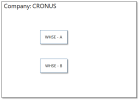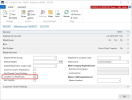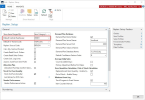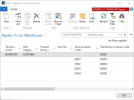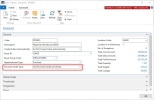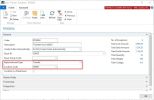


Replenishment can be run with multiple warehouses. In that case the stores will be supplied from these warehouses or directly from vendors, if set up accordingly. Rules are needed to assign stores to warehouses - this is covered in the section Item Flow
Goal
The goals of this step:
- Get a detailed understanding on the retailers company structure and the warehouse structure
- Create a topology drawing or list of warehouses
- Set up warehouses in LS Central
Output
Topology drawing, list of warehouses (see examples here)

Setup considerations
Location
The relevant locations have to be created and set up as a warehouse location.
The field Location is a Warehouse on the Location card has to be set to True.
See more details here: Location.
Replenishment Setup
One warehouse location has to be set up as default warehouse location on the Replen. Setup. page in the field Default Central Warehouse.
All stores will be replenished from this warehouse unless defined differently in the Replen. From Warehouse page.
See more details here: Warehouse.
Replenishment rules for non default warehouses
For the non default warehouses, explicit definitions need to be set up, which store will be replenished by which warehouse for which items. This is analyzed in detail in the Item Flow step.
Replenishment Templates
Purchase Replenishment Templates are used to calculate Purchase Order proposals for the warehouse.
The used Replenishment Templates need to have the value One Purchase Order per Vendor or One Purchase Order per Vendor with Cross Docking set up in the field Purchase Order Type.
See more information about Replenishment Templates here: Replenishment Template.
Transfer Replenishment Templates are used to calculate Transfer Order proposals for the stores.
The used Replenishment Templates need to have the warehouse location code set up in the field Location Code.
See more information about Replenishment Templates here: Replenishment Template.
Go back to:
